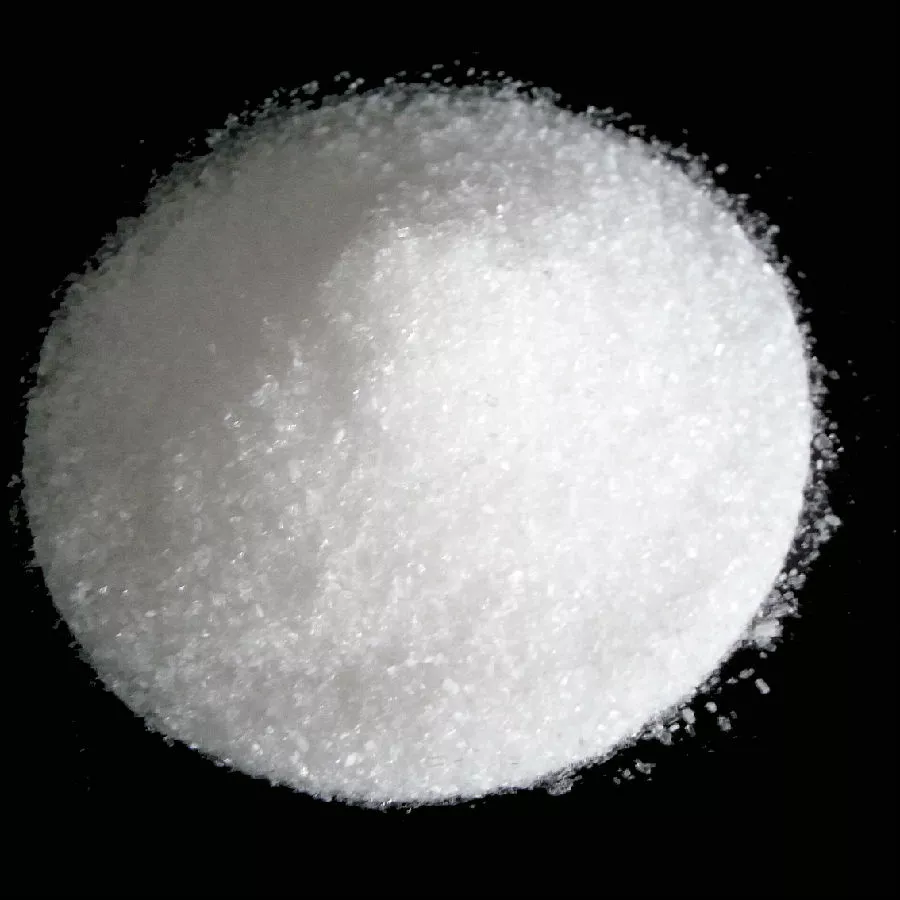IUPAC Name
Magnesium sulphate
Cas Number
10034-99-8
HS Code
28332100
Formula
MgSO4
Industry
Animal Feed
Appearance
Colorless crystals or white crystal to fine powder
Common Names
Magnesium sulphate, Epsom salt
Packaging
25 Kg Bag
Magnesium sulfate, commercially known as Epsom Salt is white crystalline salt that commonly used to treat malignant hypothermia in swine and hypomagnesemia in dairy cattle. It is consumed with specific dosage to prevent and treat magnesium deficiency. Magnesium sulfate can be added to cattle feed to prevent lactation tetany or grass tetany that might lead to respiratory failure or death.
Manufacturing process of a magnesium sulphate product is obtainable by carrying out these methods.
1. Providing a sulphuric acid product that has been obtained as a by-product during the sulphate process for manufacturing titanium dioxide;
2. Concentrating the sulphuric acid product to obtain a concentrated product that has a higher sulphuric acid concentration;
3. Combining a magnesium-based neutralising agent with the concentrated product and allowing the magnesium-based neutralising agent and the sulphuric acid to react, to generate magnesium sulphate in solution; and
4. Crystallising magnesium sulphate out of the solution, to obtain a crystalline magnesium sulphate product together with a remaining liquor.
Magnesium sulfate, commercially known as Epsom Salt is white crystalline salt that commonly used to treat malignant hypothermia in swine and hypomagnesemia in dairy cattle. It is consumed with specific dosage to prevent and treat magnesium deficiency. Magnesium sulfate can be added to cattle feed to prevent lactation tetany or grass tetany that might lead to respiratory failure or death.
Manufacturing process of a magnesium sulphate product is obtainable by carrying out these methods.
1. Providing a sulphuric acid product that has been obtained as a by-product during the sulphate process for manufacturing titanium dioxide;
2. Concentrating the sulphuric acid product to obtain a concentrated product that has a higher sulphuric acid concentration;
3. Combining a magnesium-based neutralising agent with the concentrated product and allowing the magnesium-based neutralising agent and the sulphuric acid to react, to generate magnesium sulphate in solution; and
4. Crystallising magnesium sulphate out of the solution, to obtain a crystalline magnesium sulphate product together with a remaining liquor.
